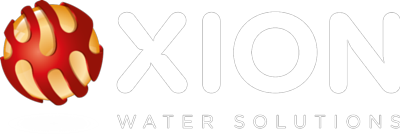UV Systems
Products
Introduction
Ultraviolet (UV) light sterilisation systems are a clean, safe, easy and cost-effective way to treat your water. UV sterilisation of water streams require no chemical additions and do not change the water taste, odour, pH or chemical properties. UV sterilisation will inactivate more than 99% of all bacteria, viruses, algae and protozoa when operated correctly. The UV light generated irradiates cell DNA structures, destroying nucleic acids and rendering them incapable of performing vital cellular functions which prevents further growth or multiplication.
In the electromagnetic spectrum UV light lies between the x-ray and visible light spectrums. The UV light wavelength range is between 200 & 390 nanometers (nm), the optimal wavelength for germicidal action occurs at 254 nm.
Benefits of UV Sterilisation
No change to water chemistry, taste or odour
Environmentally friendly, no dangerous or toxic chemicals are used or produced
Very small installation footprint
Impossible to overdose
Near instantaneous treatment, no need for retention times
Simplicity and ease of maintenance
Technical Details
See the Xion ‘Knowledge Hub’ to find a wealth of material covering the theory of UV systems and helpful hints on typical UV system troubleshooting and plant operation.
Get in touch
Typical Applications
- Disinfection of surface and groundwater
- Breweries, food & beverage
- Pharmaceutical & laboratory
- Semiconductor
- Leisure
- Building services
- Destruction of free chlorine/ozone
- Waste water treatment
Take a look here:
Portable & Sterile
Process Water
Get in touch today for further information on UV systems - Our team are ready to help. Call us today on 01733 666655 or email us hello@xionwater.com
UV radiation is invisble to the human eye but its affects can be observed through the fading of coloured clothes and plastics when left out in the sun, as well as causing damage to our skin. The UV radiation present in sunlight can break down the chemical bonds causing the colour to fade or skin to become burnt.
Similarly the light emitted by UV sterilisation units with a wavelength of 254 nm irradiates bacteria, viruses, algae and protozoa cell DNA structures. The UV light penetrates through the cell wall and cytoplasmic membranes which re-arranges the DNA and destroys the nucleic acids, rendering them unable to perform vital cellular functions. UV sterilisation does not remove cells from the water stream but it kills them and prevents further growth or multiplication.
Most UV systems consist of UV lamps submerged in storage tanks or held inside polished housings with the water flow passing around the UV lamps.
How does UV Sterilisation Work?
Reclaim & Waste
Service & Support
The lamp is separated from the water by a transparent quartz sleeve and the polished surfaces reflect the UV light within the housing. For an efficient kill rate a minimum UV energy dose rate of 30-32 mJ/cm2 is required. To achieve this dose rate the system flow rate must be matched to the UV lamp output.
Low or medium pressure mercury lamps are used to generate UV radiation at a wavelength of 254 nm, the optimal wavelength for disinfection. These lamps have a typical working life of 8000 hours so, if the lamp is being run continuously it should be replaced annually.
The water must be free of turbidity and suspended particles as their presence in the water stream will create shadow areas that will allow micro-organisms to hide from the UV light radiation emitted from the lamps.
